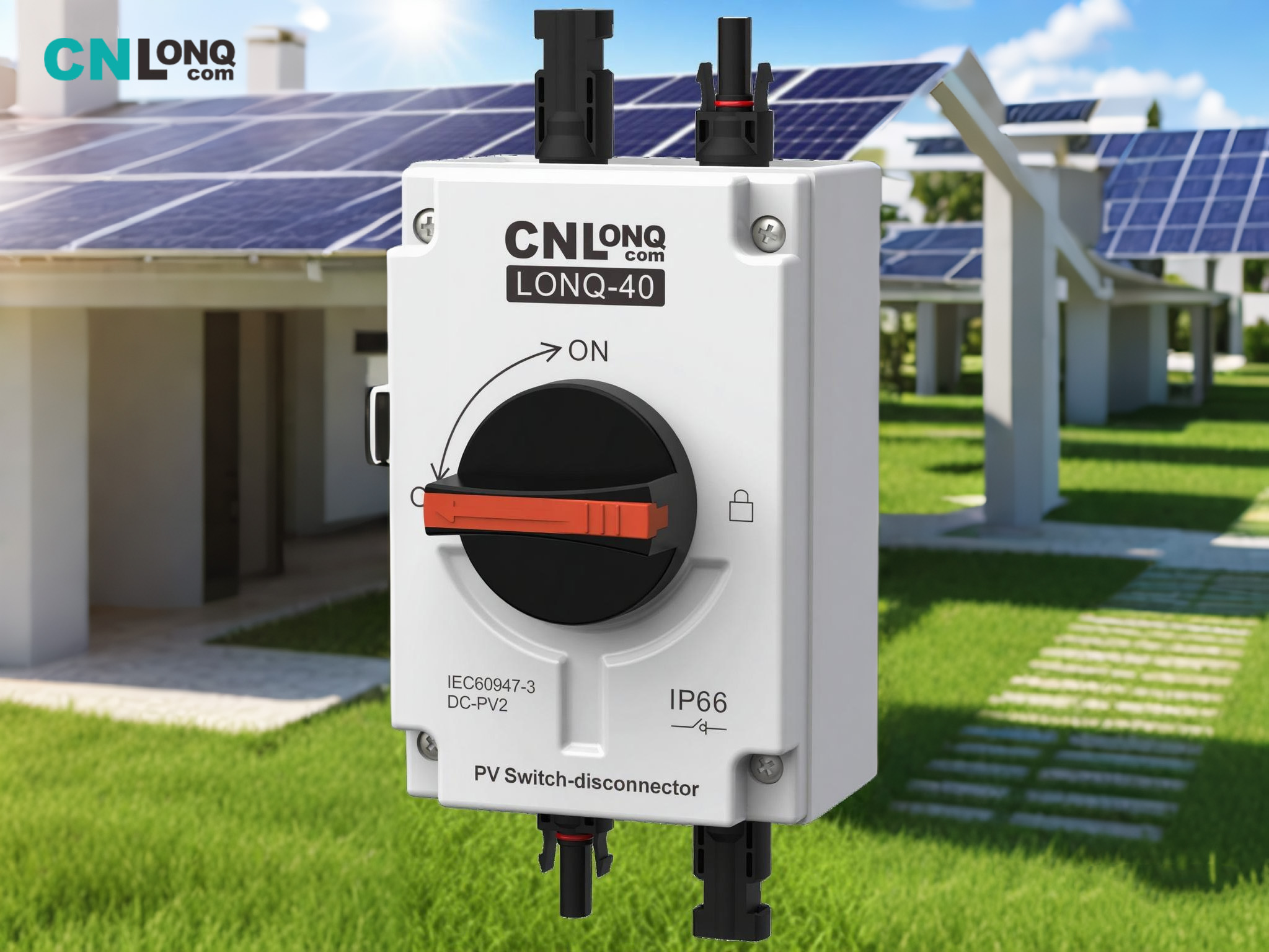
- English
- Español
- Português
- русский
- Français
- 日本語
- Deutsch
- tiếng Việt
- Italiano
- Nederlands
- ภาษาไทย
- Polski
- 한국어
- Svenska
- magyar
- Malay
- বাংলা ভাষার
- Dansk
- Suomi
- हिन्दी
- Pilipino
- Türkçe
- Gaeilge
- العربية
- Indonesia
- Norsk
- تمل
- český
- ελληνικά
- український
- Javanese
- فارسی
- தமிழ்
- తెలుగు
- नेपाली
- Burmese
- български
- ລາວ
- Latine
- Қазақша
- Euskal
- Azərbaycan
- Slovenský jazyk
- Македонски
- Lietuvos
- Eesti Keel
- Română
- Slovenski
- मराठी
- Srpski језик
The Critical Role of Disconnect Switches in Solar PV Systems
2025-08-11
As solar photovoltaic (PV) systems continue to expand globally, ensuring their safe and efficient operation remains a top priority. Among the essential components that safeguard these systems,disconnect switches play a fundamental yet often underestimated role. Unlike circuit breakers, which protect against overloads and short circuits, disconnect switches provide physical isolation, enabling safe maintenance, emergency shutdowns, and system segmentation.
Why Disconnect Switches Matter in Solar PV Systems
1. Safety First: Electrical Isolation for Maintenance
A disconnect switch’s primary function is to create a visible break in the circuit, ensuring that no current flows when technicians perform inspections or repairs. This is especially critical in PV systems because:
- Solar panels generate voltage whenever exposed to light, meaning even when the inverter is off, dangerous DC voltage may still be present.
- DC arcs are harder to extinguish than AC arcs, making proper isolation vital to prevent electrical hazards.
2. System Segmentation for Efficient Operation
Large-scale solar farms and even residential PV systems rely on disconnect switches to isolate specific sections without shutting down the entire array. Key applications include:
- String-level isolation: Allows maintenance on a single solar string without affecting others.
- Inverter protection: Disconnects the inverter from both the DC side (panels) and AC side (grid) for servicing.
- Rapid shutdown compliance: Meets safety codes (like NEC 690 in the U.S.) by quickly de-energizing PV arrays during emergencies.
3. Grid Interconnection Safety
At the point where a solar system connects to the grid, disconnect switches ensure complete isolation during grid outages or maintenance. Utilities often require a visible, lockable disconnect to protect line workers from backfeed electricity.
Choosing the Right Disconnect Switch
Not all disconnect switches are equal—PV systems have unique demands:
- DC vs. AC Ratings: DC switches must handle sustained arcs, while AC switches are simpler but must manage grid synchronization.
- Voltage & Current Ratings: Must exceed the system’s maximum operating conditions (e.g., 1500V for utility-scale solar).
- Environmental Durability: Outdoor switches need **IP65+ protection** against dust, moisture, and extreme temperatures.
Future Trends: Smarter & Safer Disconnects
As solar technology evolves, so do disconnect switches:
✔ IoT Integration: Real-time status monitoring via smart sensors.
✔ Higher Voltage Support: For next-gen 2000V PV systems.
✔ Hybrid Designs: Combining disconnects with surge protection and arc-fault detection.
Conclusion
Disconnect switches may not be the most glamorous part of a solar installation, but they are indispensable for safety and reliability. Whether for a rooftop array or a utility-scale farm, proper selection and installation of these switches ensure compliance, protect personnel, and keep systems running smoothly.
For solar professionals, understanding disconnect switches isn’t optional—it’s essential.




